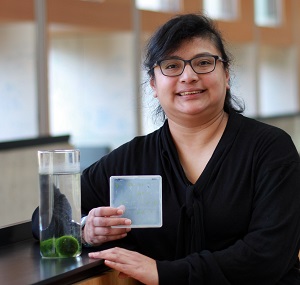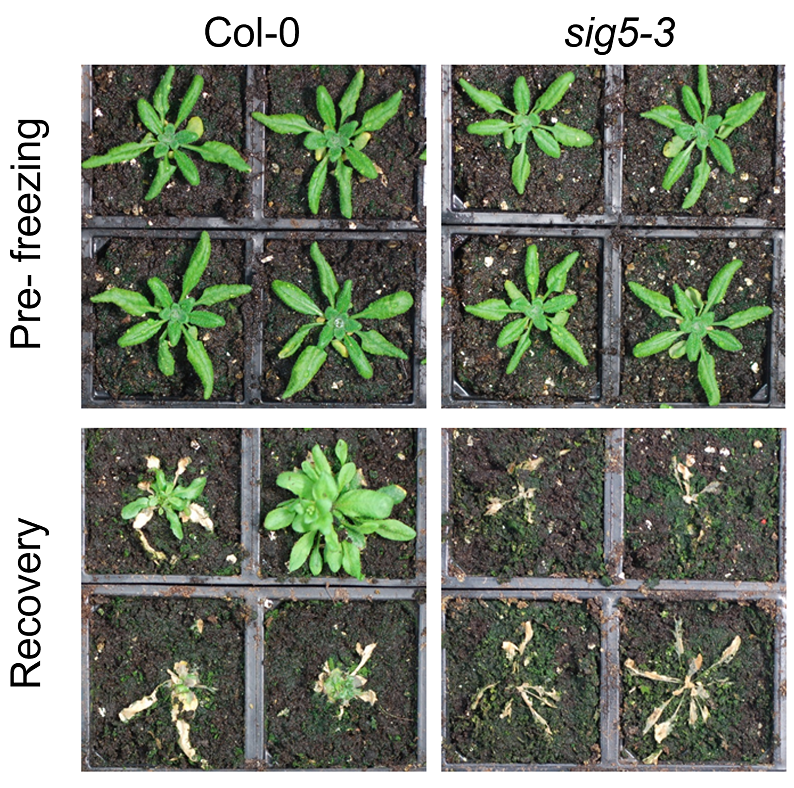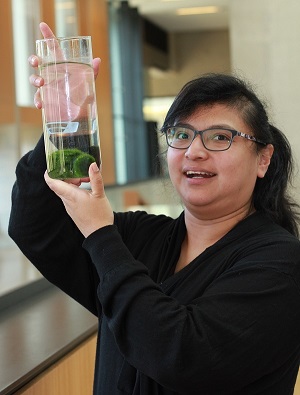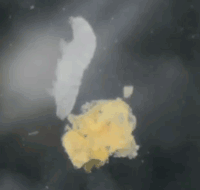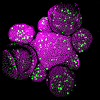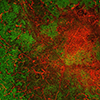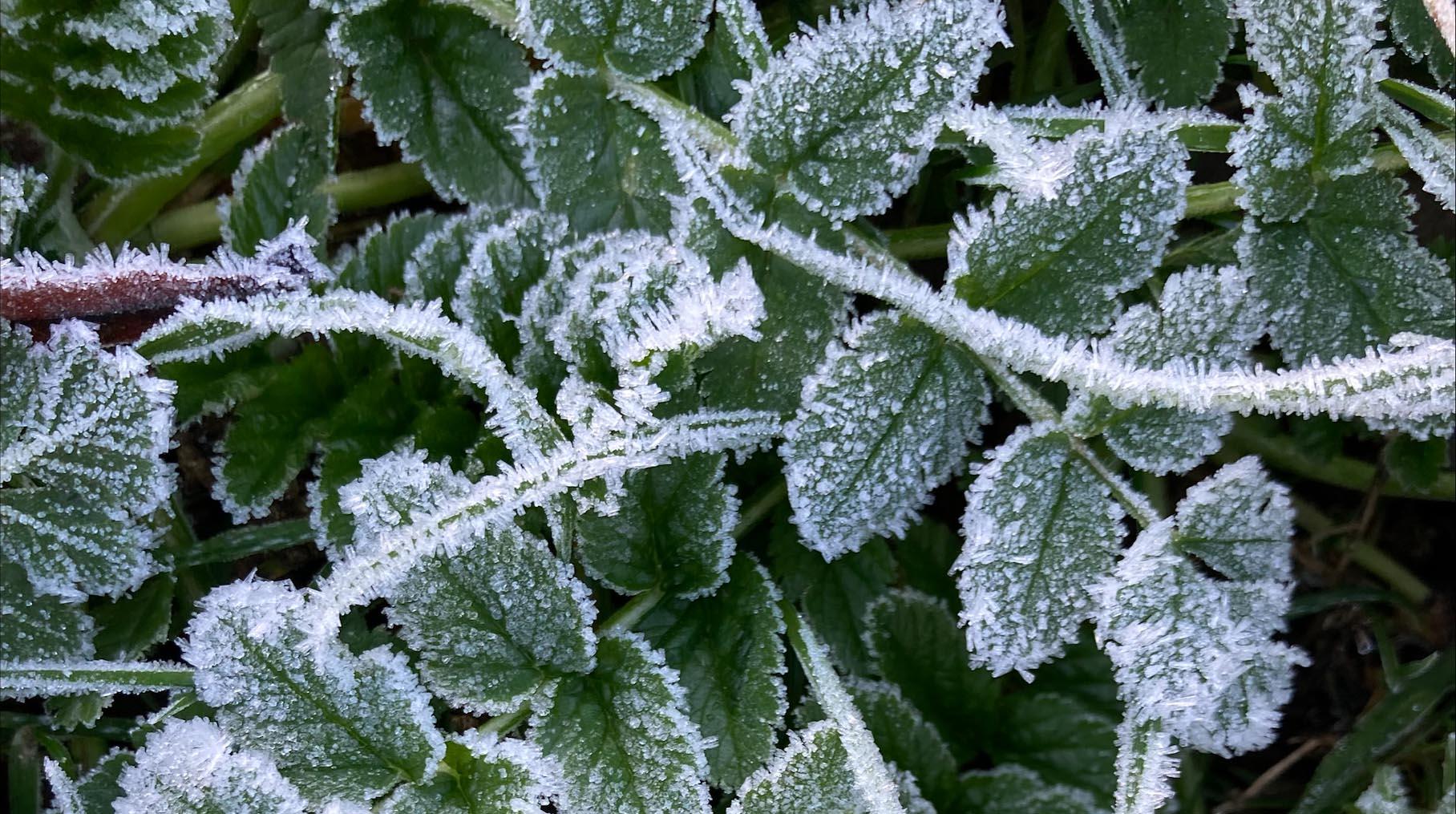
Humans of SLCU
Dr Dora Cano-Ramirez
Research Associate
Locke Group | Sainsbury Laboratory | University of Cambridge
Connect with Dora on Twitter https://twitter.com/Dodka_
Science of the extremes – what does it take for plants to survive?
Dr Cano-Ramirez is a scientist studying the extremes!
Her research, which focuses on understanding how plants respond and adapt to weather extremes, is revealing just what it takes for plants to survive.
If plants are exposed to unseasonal or extreme stresses, such as below freezing temperatures in late spring or an extended heat wave in the middle of the growing season, it could wipe out a whole crop. The impact of increasing mean global temperatures on crops like maize are being modelled by scientists. However, the impact of unseasonal and extreme weather events, like frost, heavy rain, heatwaves or extended drought, that are also predicted to increase under climate change, are more difficult to quantify.
Understanding how plants respond and adapt to these extremes, and the compounding effect of multiple stresses, will help us to better adapt agricultural production for a future of extreme weather conditions.
Dawn cold endangers plants
Dr Cano-Ramirez began researching how plants respond to fluctuating environments during her PhD at the University of Bristol. Her research, which identified a mechanism that plants use to cope with cold at dawn, was recently published in Nature Plants as equal first-author with Dr Paige Panter, in collaboration with colleagues as part of Professor Antony Dodd’s research team at the John Innes Centre.
“Plants need to be able to discern when to take low temperature seriously. Leading in to winter, the coldest time of day is usually just before dawn, when the earth has lost the maximum amount of heat energy from the previous short day’s sun. This will trigger cold acclimation mechanisms to gradually adapt to freezing temperatures.” Dr Cano-Ramirez said. “Light combined with low temperatures can be very dangerous to a plant and we found that the plant’s circadian clock helps them make the decision to respond, based on the time of day the cold snap happens.”
Using the model plant Arabidopsis thaliana, the team undertook a series of experiments to identify the signalling pathway plants use to prepare and protect their cells from cold temperatures.
“We found that plants have employed an ancient mechanism in the chloroplasts to help them tolerate the cold. Low temperatures and circadian signals are integrated by a ‘sigma factor’, which is a gene regulator that contributes to protection of photosynthetic machinery before and during freezing,” Dr Cano-Ramirez added.
Arabidopsis thaliana plants showing survival to freezing (2h at -2.0 C followed by 24h at -7.0 C and finally -9.0 C).
“This signalling pathway seemed to be most cold-sensitive before dawn, which suggests it might be important during cold, bright mornings. Frost and ice in late spring can be particularly damaging to buds, flowers and early fruit on crops like apples, cherries, blueberries and grapes, so understanding the mechanisms that plants uses to protect itself could be useful in developing more frost-resistant varieties.”
Before joining the Sainsbury Laboratory, Dr Cano-Ramirez was most recently exploring the interactions between the plant circadian clock and plant life-cycle. Her work in Alex Webb’s team in the Department of Plant Sciences at the University of Cambridge covered topics such as wheat flowering and the role of the protein encoded by the BIG gene as a regulator of the circadian clock and polar auxin transport.
Can noisy genes help adapt more resilient crops?
Joining the Sainsbury Laboratory in November, Dr Cano-Ramirez is studying how random gene expression in plants affects their survival under fluctuating environments. “If variability in gene expression has an impact on fitness and survival this could potentially help with developing crops that are more adaptable to unexpected changes in temperature,” she said. “Often we want plants to behave the same – germinate at the same time and flower at the same time so that they can be harvested at the same time. But sometimes diversity can be good, and we see even in populations of genetically identical plants that there is still a lot of variability. A large part of this is caused by “noisy genes” where there are random differences in how often a gene is switched on.”
“It is thought that this randomness would be an advantage in fluctuating environments. For example, if a late spring frost wipes out a field of seedlings, there may still be some ungerminated seeds in the soil that survived the frost and will germinate later.”
The person behind the science
What is your favourite tool of the trade?
Charge-coupled device (CCD) cameras are my favourite, they convert incoming photons of light into electrical charge and then typically the signal is amplified so even a dim signal can be detected and recorded. They are used in epifluorescence microscopes and the high-resolution version to see bioluminescence. I love how you start recording and the image starts to appear in the screen, photons look like stars appearing on a dark night sky!
What’s the best thing about being a scientist?
The moment when you see or know something that, to the best of your knowledge, no one else has seen or known.
What is the worst thing about being a scientist?
When you realise that what you thought was new and unknown was actually done by someone in the XVIII century or the 70’s, but it is still great because you are adding to the evidence supporting the science and everyone wins.
What are your hobbies/interests outside of work?
Petting dogs and capturing species to become my pets (tardigrades were my latest).
*Image above right: While studying circadian rhythms in Arabidopsis for her PhD, Dr Cano-Ramirez started a little side project on her pet plants - Marimo lake balls that were sitting in water on her desk. "I noticed these little algae balls float and sink at different times of the day and that their buoyancy was affected on cloudy days. I decided to find out why and devised a series of experiments that found they are buoyant in the light because photosynthesis causes bubbles to form on the balls and that this was controlled by circadian rhythms of photosynthesis. It started as a fun experiment and ended up getting a lot of public attention. It was a great example of how important curiosity is and how much fun it is to do science." Her side project was published in Current Biology.

